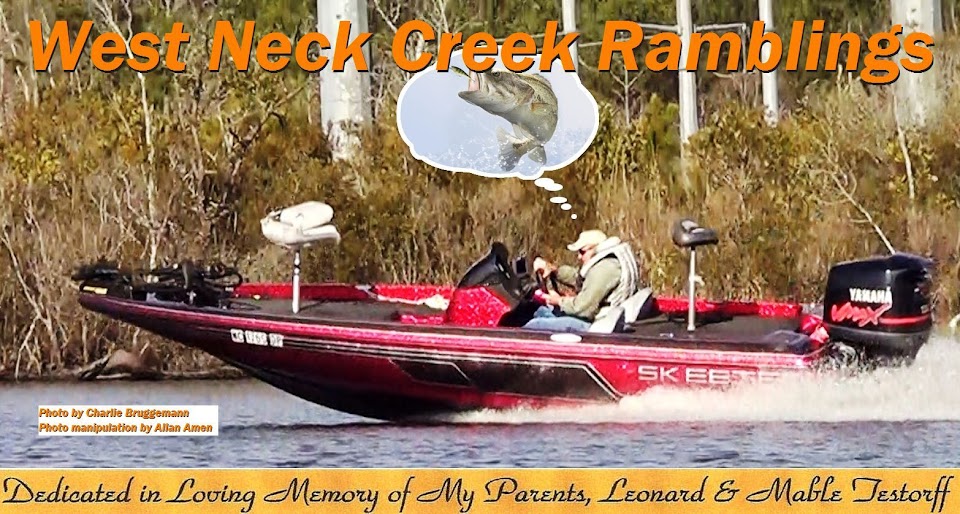Wednesday, April 27, 2016
If Only the Walls of My Garage Could Talk...
Maybe then I'd have better luck remembering all the many different long-buried fishing treasures I have stored out there. As it is, however, it usually takes someone or something to jog my memory.
Case in point: Last Saturday, I was talking to an old friend who suggested I should be throwing a lizard at this point in the season. At that moment, I remembered I have a fair-sized stash of lizards in the garage that I haven't used in probably 10 or 15 years, or maybe longer.
I originally got hooked on fishing lizards for springtime bass, thanks to a couple of young military fellas with whom I became friends at West Neck Marina. They made a believer of me when they started showing me photos of some bass they were catching on those soft plastics. It wasn't long before I began finding some success of my own with the same baits.
Lizards or salamanders are natural predators of bass. They will ransack a nest, eating both eggs and fry before the guardian has a chance to react. As a result, bass won't think twice about attacking a plastic lizard dragged into their nest. For best results, the experts suggest that you slowly shake your rod tip once the bait is in the nest, which will get the attention of the adult fish guarding the nest.
The most common techniques for fishing plastic lizards are flipping, pitching and Carolina-rigging. Targeting various wood and rock cover are favorites of anglers. Slowly dragging lizards along humps, ledges and points also can be productive. The ideal retrieves are nearly identical to what you use when fishing plastic worms, e.g., dragging, hopping, crawling, shaking, or swimming the baits. Experiment with different speeds and retrieves until you find what the fish want for that particular day or time-frame.
Swimming lizards is a simple but often overlooked tactic. With this method, simply make your cast and allow the bait to sink to the bottom before starting a slow retrieve. To add a little motion, move your rod tip up and down ever so slightly. Anglers generally agree that bass will take a lizard just as quickly as they will a crankbait.
According to experts, the drop-shot rig is another good presentation for lizards. After you have set up the rig, nose-hook the bait. Now you can cast the lure, put it in the strike zone, and leave it there for as long as you want--all of this while adding considerable movement. Quickly shaking the rod tip and slowly raising the lizard will cause it to dance so tantalizingly that bass can't resist it. The experts contend this setup can and will dominate during the spawn, as well as produce nice limits throughout the fishing season.
Lizards long have been a staple of bass diets and angler tackleboxes everywhere. Why? Because the key to catching bass is to appeal to their biological instincts, and nothing says "attack me" more than a lure designed to imitate a natural predator of fish eggs and fry. If you've never tried one, now might be a good time to do so. The first time you toss one out there, drag it across a bed, and feel that often vicious strike, both you and the fish will be hooked.
Other soft plastics touted as good picks for spawning bass include worms, grubs, crayfish, frogs, and insects. Spinnerbaits, jigs and crankbaits, especially those crankin' models with rattles, also are recommended. Whatever lure you decide on, make sure the hooks are sharp because a bedding bass likely will try to spit the bait out almost immediately.
Subscribe to:
Post Comments (Atom)


No comments:
Post a Comment